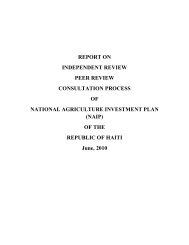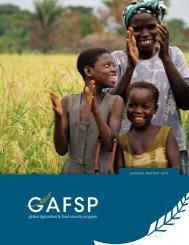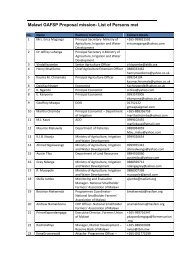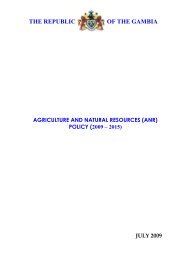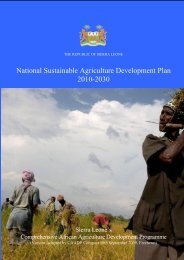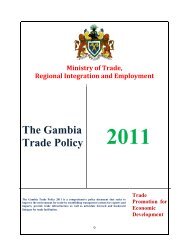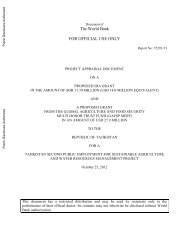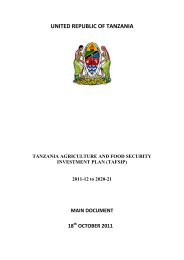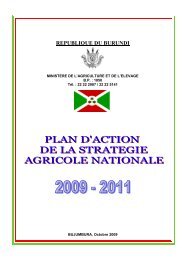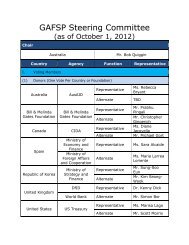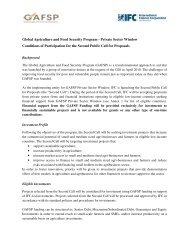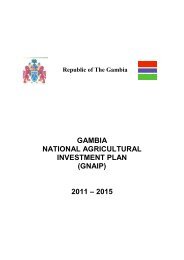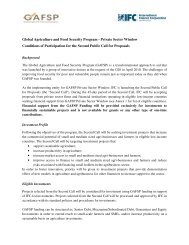Haiti: Poverty Reduction Strategy Paper; IMF Country Report 08/115 ...
Haiti: Poverty Reduction Strategy Paper; IMF Country Report 08/115 ...
Haiti: Poverty Reduction Strategy Paper; IMF Country Report 08/115 ...
You also want an ePaper? Increase the reach of your titles
YUMPU automatically turns print PDFs into web optimized ePapers that Google loves.
Human <strong>Poverty</strong> and Inequality<br />
27 For <strong>Haiti</strong>, the indicators included in the human poverty index are alarming. Life expectancy at<br />
birth is estimated at 58.1 percent (2000-2005). Maternal mortality rose from 457 to 630 per<br />
100,000 live births between 1990 and 2005. The illiteracy rate, which stood at 39 percent in 2003,<br />
remains high, even though progress has been made from one generation to the next. Only 49<br />
percent of school age children attend school. This low level of instruction is reflected in limited<br />
capacities. In 2001-2002, only 45 percent of the population between the ages of 6 and 24 was<br />
enrolled in a school or university. The degree to which food needs are met in <strong>Haiti</strong> is low. More<br />
than half the population is unable to obtain the minimum food ration established by FAO of 225<br />
kcal per year, per individual. A WFP report on food security and vulnerability showed that<br />
households that face food insecurity 1 do not have adequate income and have a low level of access<br />
to such basic essential services as drinking water and health facilities, particularly in rural areas<br />
and shantytowns, where only 25 percent of inhabitants have access to drinking water and very<br />
few persons have access to adequate health facilities. Overall, these households have a low level<br />
of access to health care and markets and low levels of education and schooling. Access to basic<br />
social services remains very limited – more than 77 percent in the 133 municipalities (2002) lack<br />
basic services.<br />
The Perception of <strong>Poverty</strong> by Households<br />
28 In the view of households, the degree to which their basic needs are met is very limited,<br />
particularly in rural areas. The problem is even more acute in the case of food and health. In rural<br />
areas, only 13.1 percent of households think that they can meet their basic food needs and 9<br />
percent think that they can address their health problems, compared to 33 percent and 28 percent<br />
in the metropolitan area (La parole des Haïtiens, <strong>Haiti</strong>, p.54). Throughout <strong>Haiti</strong>, four of every five<br />
households indicated that they are unable to properly meet their foods needs. These households<br />
indicated that a reduction in their food ration is their first line of action in such situations.<br />
Approximately 32 percent of households indicated that they would use potential additional<br />
income to improve their food situation; 24 percent, for the education of their children; and 23<br />
percent, for housing. Barely 9.6 percent of self-employed heads of household working in<br />
agriculture indicate that they are able to meet their food needs. Data indicate that poverty and<br />
vulnerability are widespread in both the rural and urban areas.<br />
29 More than 70 percent of heads of household think that poverty has increased, particularly in<br />
recent years. Job creation, controlling inflation, and access to land are the primary measures<br />
recommended by households to address poverty. They appear to view the problem largely in<br />
terms of purchasing power and access to the means of production.<br />
1<br />
This survey was conducted in four departments: West, North, North-East, and Central Plateau.<br />
20



